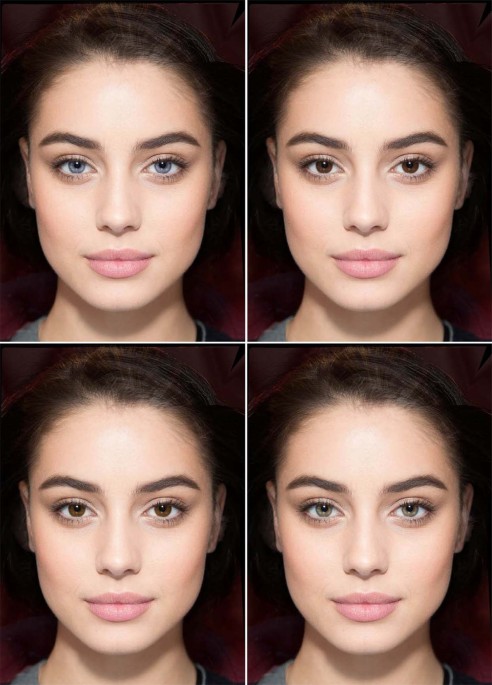Y
your personality
Self-banned
-
- Joined
- Jun 26, 2020
- Posts
- 28,229
@tehgymcel420 @Gymcelled @Copexodius Maximus @Incline

 www.nature.com
www.nature.com

In humans, only attractive females fulfil their sexually imprinted preferences for eye colour - Scientific Reports
Early exposure to parental features shapes later sexual preferences in fish, birds, and mammals. Here I report that human males’ preferences for a conspicuous trait, colourful eyes, are affected by the eye colour of mothers. Female faces with light (blue or green) eyes were liked better by men...
Brutal cockroachpill on settling.Abstract
Early exposure to parental features shapes later sexual preferences in fish, birds, and mammals. Here I report that human males’ preferences for a conspicuous trait, colourful eyes, are affected by the eye colour of mothers. Female faces with light (blue or green) eyes were liked better by men whose mother had light eyes; the effect broke down in those who had felt rejected by her as children. These results, garnered on over one thousand men, complete those of a symmetrical study on one thousand women, painting a fuller picture of human sexual imprinting. Both men and women appear to have imprinted on their opposite-sex parents unless these were perceived as cold and unjustly punitive. Birds require strong attachment to sexually imprint—a constraint in place to reduce the perils of acquiring the wrong sort of information. Parents who form no bond with their offspring may fail to be recognised as appropriate parental imprinting objects. Consistent with human females being, as in most of the animal kingdom, the choosier sex, imprinted preferences were displayed by both sexes but translated into real-life partner choices solely in women—attractive women. Apparently, not all of us can afford to follow our own inclinations.
This is not intended to imply that handsome males do not get females who are more attractive than average. Other things being equal they do, because attractive females (a) are bound to accept handsome males sooner than they accept plain males, and (b) are more interested in handsome males than other females are (shown in both humans15 and birds58). The implication is, instead, that a husband’s peculiarities—such as eye colour or facial health cues—will match the traits preferred by his attractive wife more often than a wife’s peculiarites will match those preferred by her attractive husband.
That not everyone pairs up with their first choice is painfully obvious in humans and would seem to be the case in other creatures, too. Female cockroaches, for example, become less choosy as they get older53, showing that they are cranking down their aspiration level based on a reality check. And of course, in none of the experimental studies conducted so far does every bird51, fish3,4, spider5, and fruit fly12 that is expected to have developed an imprinted preference get a mate with the favourite trait. Generalising our data from humans to other species, rather than the other way around as is usually done, one ought to conclude that the fairest members of the choosier sex can afford to act on their imprinted preferences; those a little less fair are forced to relax their standards and selectivity; and the members of the opposite sex can only show off, court, and hope. The nonchoosers’ pick of whom to compete for must still be guided by their own imprinted preferences, yet such preferences will largely be overshadowed by those of the choosers.
Sexual imprinting has been found wherever it has been looked for51—a testament to its being an extraordinarily popular, possibly quite ancient, mechanism for acquiring mate preferences. The findings discussed here suggest that humans are no exception. And also that, in our own species as in much of the rest of the animal kingdom, who ends up with whom is mostly determined by females.
Last edited:





